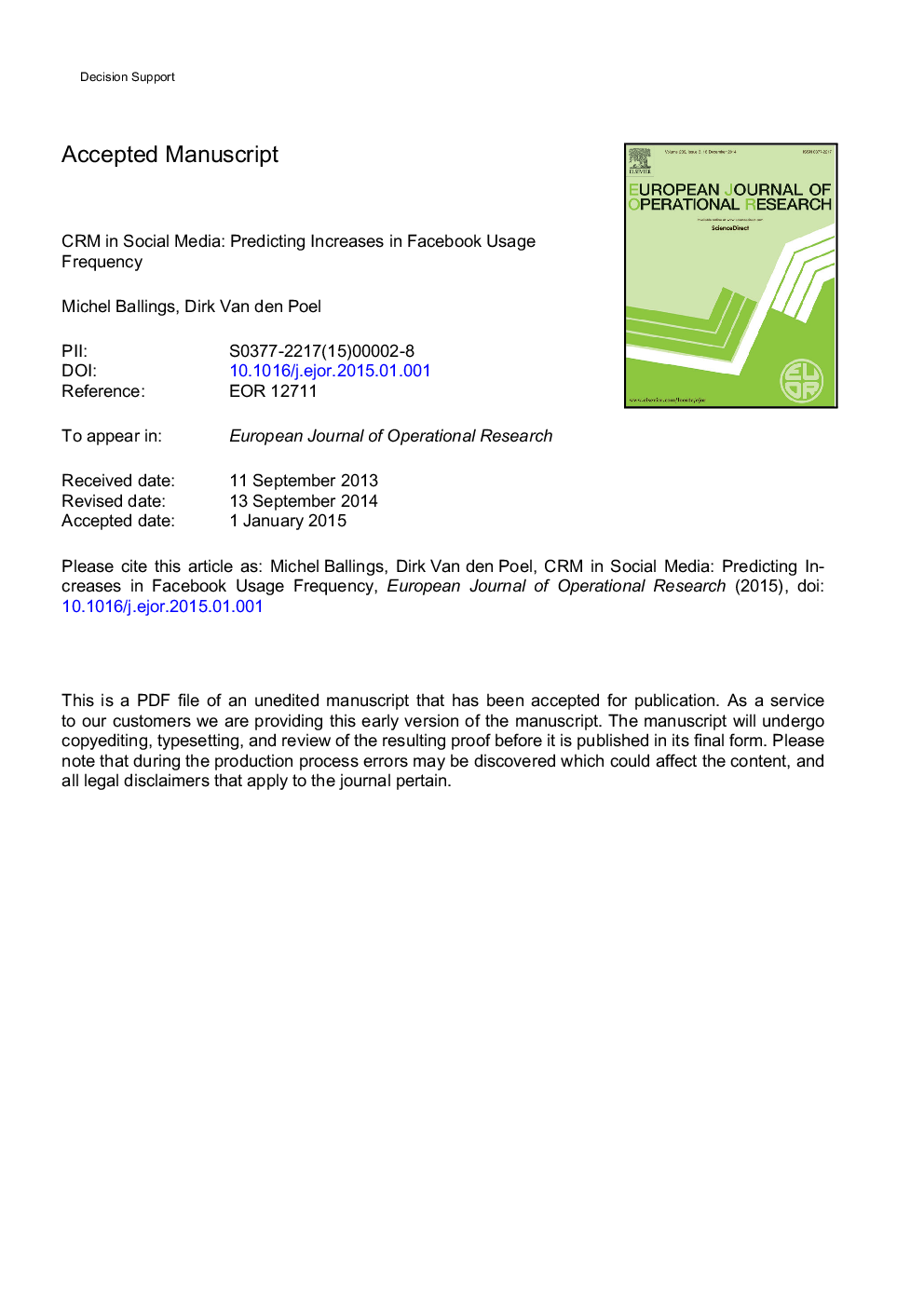| Article ID | Journal | Published Year | Pages | File Type |
|---|---|---|---|---|
| 6896722 | European Journal of Operational Research | 2015 | 41 Pages |
Abstract
The purpose of this study is to (1) assess the feasibility of predicting increases in Facebook usage frequency, (2) evaluate which algorithms perform best, (3) and determine which predictors are most important. We benchmark the performance of Logistic Regression, Random Forest, Stochastic Adaptive Boosting, Kernel Factory, Neural Networks and Support Vector Machines using five times twofold cross-validation. The results indicate that it is feasible to create models with high predictive performance. The top performing algorithm was Stochastic Adaptive Boosting with a cross-validated AUC of 0.66 and accuracy of 0.74. The most important predictors include deviation from regular usage patterns, frequencies of likes of specific categories and group memberships, average photo album privacy settings, and recency of comments. Facebook and other social networks alike could use predictions of increases in usage frequency to customize its services such as pacing the rate of advertisements and friend recommendations, or adapting News Feed content altogether. The main contribution of this study is that it is the first to assess the prediction of increases in usage frequency in a social network.
Related Topics
Physical Sciences and Engineering
Computer Science
Computer Science (General)
Authors
Michel Ballings, Dirk Van den Poel,
